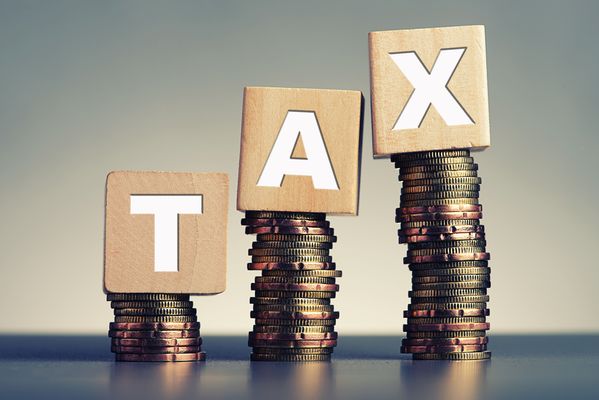6.1.3
Distribution of Wealth UK
The Gap Between Rich and Poor in the UK
The Gap Between Rich and Poor in the UK
According to the Office of National Statistics there are huge wealth differences within and between specific groups in the UK


Distribution UK
Distribution UK
- According to the Office of National Statistics, in the UK, the wealth held by the top 10 percent of the population is around four times greater than that of the bottom half of all households combined, and over 850 times greater than the least wealthy 10 percent of households.
- There are also differences within and between specific groups.


In 2013-14 in the UK
In 2013-14 in the UK
- 13.2 million people were living in poverty (below 60 percent of median income), that’s 21 percent of the population.
- The majority of those living in poverty are from working-class backgrounds.


The main groups living in poverty (2013-14)
The main groups living in poverty (2013-14)
- In households without work (50%).
- In households with low pay (50% self-employed or in full/part-time work).


Within households at greater risk of poverty:
Within households at greater risk of poverty:
- 13% were pensioners.
- 16% were lone parents.
- 28% were children.
- 22% belonged to minority ethnic groups.
- 22% were disabled.
Earnings UK
Earnings UK
The amount of income a person generates varies widely.


2014 UK
2014 UK
- In 2014 the UK Treasury figures showed the top 10% of earners in Britain having salaries which are equal to more than the bottom 40% of earner salaries combined.


The top decile
The top decile
- The same Treasury data shows the top decile (a decile is any of the nine values that divide the sorted data into ten equal parts so that each part represents 1/10) of single adults earning a median income of £60,500, compared to just £8,600 among the bottom decile.


Disposable income
Disposable income
- Income distribution between social groups and the amount of disposable income a person or family has in the UK varies enormously.
- Variation occurs because many people have an income of less than 60% of the median income.
- Disposable income is the money a person has left over after all taxes have been paid.


Average income
Average income
- UK average income in 2014 was £26,500.
The Redistribution of Wealth and Income
The Redistribution of Wealth and Income
In order to address the inequalities in wealth, successive governments introduce policies which attempt to redistribute wealth and incomes.


Redistribution
Redistribution
- Redistribution of wealth refers to the transfer of wealth and income from one individual or group to another individual or group by means of social mechanisms, including:


Methods of redistribution
Methods of redistribution
- Social welfare benefits – payments paid by the state to needy members of society.
- Income tax – tax paid on earned or unearned income.
- Inheritance tax – a tax paid when people give gifts of wealth.
- Capital gains tax – a tax paid when gaining significantly from the sale of an asset.


Failures of the system
Failures of the system
- Despite government policies, redistributing wealth has been largely unsuccessful due to people’s failure to claim benefits they are entitled to.


Tax evasion
Tax evasion
- Tax evasion is also an issue: people do not always declare their income or wealth so they don’t have to pay tax on it.
- Tax avoidance is where people, mainly the wealthy, employ accountants to find legal ways of avoiding paying tax and therefore redistribute their wealth.


Tax relief
Tax relief
- Tax relief, where the amount of income tax a person pays is reduced, occurs when people pay money into their pension or make charitable donations.
- The more a person pays into these areas the greater their tax relief which is why the rich have the most to gain from tax relief.
1Theory & Methods
1.1Sociological Theories
1.2Sociological Methods
2Education with Methods in Context
2.1Role & Function of the Education System
2.2Educational Achievement
2.3Relationships & Processes Within Schools
3Option 1: Culture & Identity
3.1Conceptions of Culture
3.2Identity & Socialisation
3.3Social Identity
3.4Production, Consumption & Globalisation
4Option 1: Families & Households
4.1Families & Households
4.2Changing Patterns
4.3The Symmetrical Family
4.4Children & Childhood
5Option 1: Health
5.1Social Constructions
5.2Social Distribution of Healthcare
5.3Provision & Access to Healthcare
5.4Mental Health
6Option 1: Work, Poverty & Welfare
6.1Poverty & Wealth
7Option 2: Beliefs in Society
7.1Ideology, Science & Religion
7.2Religious Movements
7.3Society & Religion
8Option 2: Global Development
8.1Development, Underdevelopment & Global Inequality
8.2Globalisation & Global Organisations
8.3Aid, Trade, Industrialisation, Urbanisation
9Option 2: The Media
9.1Contemporary Media
9.2Media Representations
10Crime & Deviance
10.1Crime & Society
10.2Social Distribution of Crime
Jump to other topics
1Theory & Methods
1.1Sociological Theories
1.2Sociological Methods
2Education with Methods in Context
2.1Role & Function of the Education System
2.2Educational Achievement
2.3Relationships & Processes Within Schools
3Option 1: Culture & Identity
3.1Conceptions of Culture
3.2Identity & Socialisation
3.3Social Identity
3.4Production, Consumption & Globalisation
4Option 1: Families & Households
4.1Families & Households
4.2Changing Patterns
4.3The Symmetrical Family
4.4Children & Childhood
5Option 1: Health
5.1Social Constructions
5.2Social Distribution of Healthcare
5.3Provision & Access to Healthcare
5.4Mental Health
6Option 1: Work, Poverty & Welfare
6.1Poverty & Wealth
7Option 2: Beliefs in Society
7.1Ideology, Science & Religion
7.2Religious Movements
7.3Society & Religion
8Option 2: Global Development
8.1Development, Underdevelopment & Global Inequality
8.2Globalisation & Global Organisations
8.3Aid, Trade, Industrialisation, Urbanisation
9Option 2: The Media
9.1Contemporary Media
9.2Media Representations
10Crime & Deviance
10.1Crime & Society
10.2Social Distribution of Crime
Unlock your full potential with Seneca Premium
Unlimited access to 10,000+ open-ended exam questions
Mini-mock exams based on your study history
Unlock 800+ premium courses & e-books